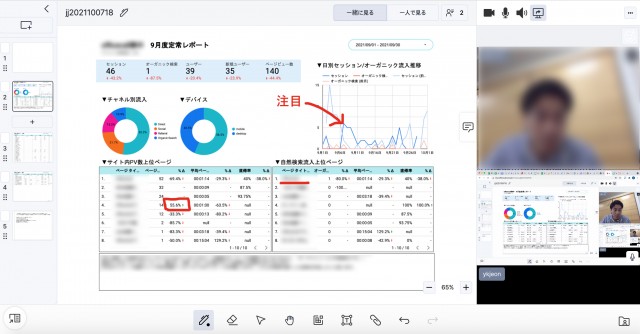Hydraulic Fittings: Essential Components for Efficient Fluid Power Sys…
ページ情報
照会 29回
作成日: 24-05-05 23:12
본문
Hydraulic fittings are essential elements in fluid energy techniques, connecting various hydraulic elements and allowing for the transmission of pressurized hydraulic fluid. From guaranteeing leak-free connections to facilitating system versatility, hydraulic fittings play an important function in maintaining the effectivity and reliability of hydraulic techniques across industries. In this text, we'll discover the importance, varieties, features, and applications of hydraulic fittings in fluid energy techniques.
Significance of Hydraulic Fittings
Hydraulic fittings hold important significance in fluid power techniques for several reasons:
- Leak Prevention: Hydraulic fittings provide safe connections between components, preventing leaks and guaranteeing the integrity of the hydraulic system.
- Versatility: Hydraulic fittings are obtainable in quite a lot of sorts, sizes, and configurations, allowing for flexibility and flexibility in system design and set up.
- Compatibility: Hydraulic fittings are designed to accommodate completely different hydraulic elements, including hoses, pipes, valves, cylinders, and pumps, guaranteeing compatibility and seamless integration within the system.
- Efficiency: Properly chosen and put in hydraulic fittings minimize stress drops and fluid restrictions, optimizing system efficiency and performance.
Types of Hydraulic Fittings
Hydraulic fittings can be found in numerous types, each serving particular features and functions:
- Threaded Fittings: Threaded fittings characteristic male or feminine threads that screw into corresponding ports on hydraulic parts, providing a secure connection.
- Flared Fittings: Flared fittings have a flared finish that guy seals towards a mating surface, ensuring leak-free connections in high-pressure purposes.
- Compression Fittings: Compression fittings use compression rings or ferrules to secure hoses or tubes to fittings, offering a tight seal without requiring threads.
- Quick-Connect Couplings: Quick-connect couplings enable for speedy connection and disconnection of hydraulic traces, facilitating maintenance and restore tasks.
- Banjo Fittings: Banjo fittings characteristic a hole bolt with a gap by way of its aspect, permitting fluid to pass through, making them suitable for tight spaces and limited clearance purposes.
- Adapters and Reducers: Adapters and reducers are used to transition between totally different thread sizes, becoming varieties, or connection methods, enabling compatibility between hydraulic components.
Functions of Hydraulic Fittings
Hydraulic fittings carry out a quantity of important features within fluid power systems:
- Connection: Hydraulic fittings connect hoses, tubes, pipes, and other hydraulic elements to kind a complete hydraulic circuit.
- Sealing: Hydraulic fittings present a seal between mating surfaces to stop fluid leaks and keep system integrity.
- Directional Control: Some hydraulic fittings, such as valves and manifolds, control the flow direction of hydraulic fluid within the system, directing it to particular elements or circuits.
- Pressure Regulation: Certain hydraulic fittings, corresponding to stress relief valves and flow management valves, regulate the strain and flow price of hydraulic fluid to make sure optimal system performance and safety.
- Adaptation: Hydraulic fittings adapt various kinds of connections, thread sizes, or Hydraulique laval becoming configurations to accommodate the precise requirements of hydraulic parts and system designs.
Applications of Hydraulic Fittings
Hydraulic fittings discover functions across various industries and sectors, together with:
- Manufacturing: Hydraulic fittings are utilized in machine instruments, presses, and robotics purposes in manufacturing facilities to power and management hydraulic techniques.
- Construction: Hydraulic fittings are important components in building equipment corresponding to excavators, loaders, cranes, and bulldozers, facilitating movement, lifting, and digging operations.
- Agriculture: Hydraulic fittings play a critical position in agricultural gear such as tractors, harvesters, and irrigation techniques, powering hydraulic capabilities for planting, harvesting, and area operations.
- Transportation: Hydraulic fittings are utilized in commercial vehicles, buses, vans, and trailers for purposes similar to braking, steering, and suspension control, making certain protected and dependable operation.
- Mining: Hydraulic fittings assist mining operations by powering hydraulic techniques in drilling rigs, haul vehicles, loaders, and other heavy tools utilized in extraction and material dealing with.
Conclusion
Hydraulic fittings are indispensable elements in fluid energy systems, offering essential connections, sealing, and management capabilities to ensure the environment friendly and dependable operation of hydraulic equipment across industries. With their versatility, compatibility, and effectivity, hydraulic fittings play a vital role in maintaining the efficiency and integrity of hydraulic techniques in various purposes.
FAQs
1. What are hydraulic fittings?
Hydraulic fittings are parts used to attach, seal, and control hydraulic hoses, tubes, pipes, and other components inside fluid energy techniques, ensuring leak-free connections and optimal system performance.
2. What forms of hydraulic fittings are available?
Hydraulic fittings are available numerous sorts, together with threaded fittings, flared fittings, compression fittings, quick-connect couplings, banjo fittings, adapters, and reducers, each serving particular features and applications inside hydraulic methods.
3. Where are hydraulic fittings used?
Hydraulic fittings are used throughout industries corresponding to manufacturing, development, agriculture, transportation, and mining, powering hydraulic techniques in equipment, tools,
Significance of Hydraulic Fittings
Hydraulic fittings hold important significance in fluid power techniques for several reasons:
- Leak Prevention: Hydraulic fittings provide safe connections between components, preventing leaks and guaranteeing the integrity of the hydraulic system.
- Versatility: Hydraulic fittings are obtainable in quite a lot of sorts, sizes, and configurations, allowing for flexibility and flexibility in system design and set up.
- Compatibility: Hydraulic fittings are designed to accommodate completely different hydraulic elements, including hoses, pipes, valves, cylinders, and pumps, guaranteeing compatibility and seamless integration within the system.
- Efficiency: Properly chosen and put in hydraulic fittings minimize stress drops and fluid restrictions, optimizing system efficiency and performance.
Types of Hydraulic Fittings
Hydraulic fittings can be found in numerous types, each serving particular features and functions:
- Threaded Fittings: Threaded fittings characteristic male or feminine threads that screw into corresponding ports on hydraulic parts, providing a secure connection.
- Flared Fittings: Flared fittings have a flared finish that guy seals towards a mating surface, ensuring leak-free connections in high-pressure purposes.
- Compression Fittings: Compression fittings use compression rings or ferrules to secure hoses or tubes to fittings, offering a tight seal without requiring threads.
- Quick-Connect Couplings: Quick-connect couplings enable for speedy connection and disconnection of hydraulic traces, facilitating maintenance and restore tasks.
- Banjo Fittings: Banjo fittings characteristic a hole bolt with a gap by way of its aspect, permitting fluid to pass through, making them suitable for tight spaces and limited clearance purposes.
- Adapters and Reducers: Adapters and reducers are used to transition between totally different thread sizes, becoming varieties, or connection methods, enabling compatibility between hydraulic components.
Functions of Hydraulic Fittings
Hydraulic fittings carry out a quantity of important features within fluid power systems:
- Connection: Hydraulic fittings connect hoses, tubes, pipes, and other hydraulic elements to kind a complete hydraulic circuit.
- Sealing: Hydraulic fittings present a seal between mating surfaces to stop fluid leaks and keep system integrity.
- Directional Control: Some hydraulic fittings, such as valves and manifolds, control the flow direction of hydraulic fluid within the system, directing it to particular elements or circuits.
- Pressure Regulation: Certain hydraulic fittings, corresponding to stress relief valves and flow management valves, regulate the strain and flow price of hydraulic fluid to make sure optimal system performance and safety.
- Adaptation: Hydraulic fittings adapt various kinds of connections, thread sizes, or Hydraulique laval becoming configurations to accommodate the precise requirements of hydraulic parts and system designs.
Applications of Hydraulic Fittings
Hydraulic fittings discover functions across various industries and sectors, together with:
- Manufacturing: Hydraulic fittings are utilized in machine instruments, presses, and robotics purposes in manufacturing facilities to power and management hydraulic techniques.
- Construction: Hydraulic fittings are important components in building equipment corresponding to excavators, loaders, cranes, and bulldozers, facilitating movement, lifting, and digging operations.
- Agriculture: Hydraulic fittings play a critical position in agricultural gear such as tractors, harvesters, and irrigation techniques, powering hydraulic capabilities for planting, harvesting, and area operations.
- Transportation: Hydraulic fittings are utilized in commercial vehicles, buses, vans, and trailers for purposes similar to braking, steering, and suspension control, making certain protected and dependable operation.
- Mining: Hydraulic fittings assist mining operations by powering hydraulic techniques in drilling rigs, haul vehicles, loaders, and other heavy tools utilized in extraction and material dealing with.
Conclusion
Hydraulic fittings are indispensable elements in fluid energy systems, offering essential connections, sealing, and management capabilities to ensure the environment friendly and dependable operation of hydraulic equipment across industries. With their versatility, compatibility, and effectivity, hydraulic fittings play a vital role in maintaining the efficiency and integrity of hydraulic techniques in various purposes.
FAQs
1. What are hydraulic fittings?
Hydraulic fittings are parts used to attach, seal, and control hydraulic hoses, tubes, pipes, and other components inside fluid energy techniques, ensuring leak-free connections and optimal system performance.
2. What forms of hydraulic fittings are available?
Hydraulic fittings are available numerous sorts, together with threaded fittings, flared fittings, compression fittings, quick-connect couplings, banjo fittings, adapters, and reducers, each serving particular features and applications inside hydraulic methods.
3. Where are hydraulic fittings used?
Hydraulic fittings are used throughout industries corresponding to manufacturing, development, agriculture, transportation, and mining, powering hydraulic techniques in equipment, tools,







